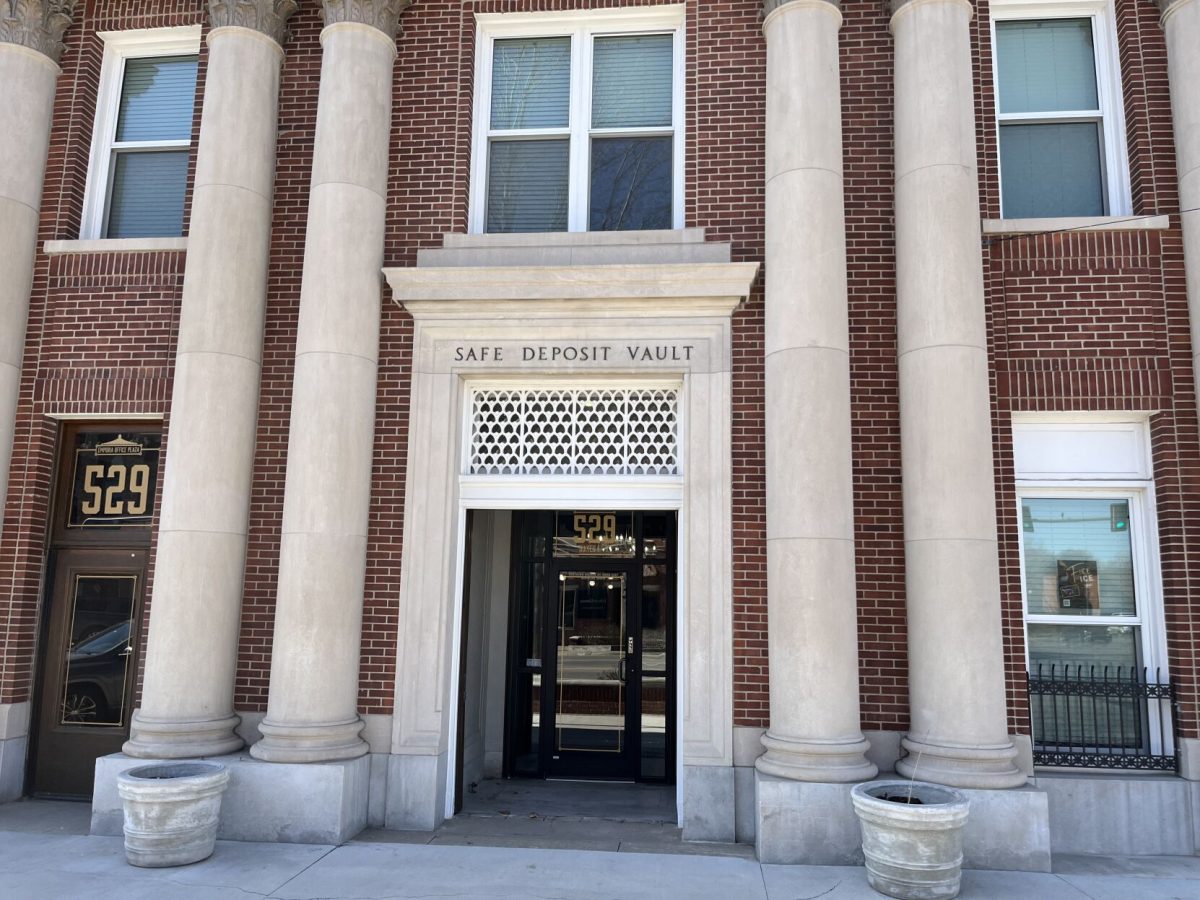 529 Commercial Street is where the first building, Emporia House, was constructed in 1857. Now, Citizens National Plaza and Lofts resides at this address. Built in 1924, this 5 story building was one of the largest bank buildings in Kansas when it was built, according to local newspapers." />
529 Commercial Street is where the first building, Emporia House, was constructed in 1857. Now, Citizens National Plaza and Lofts resides at this address. Built in 1924, this 5 story building was one of the largest bank buildings in Kansas when it was built, according to local newspapers." />
529 Commercial Street is where the first building, Emporia House, was constructed in 1857. Now, Citizens National Plaza and Lofts resides at this address. Built in 1924, this 5 story building was one of the largest bank buildings in Kansas when it was built, according to local newspapers.
The cornerstone of a city is where the first stone is laid, where symbolism meets reality and new growth sprouts. For Emporia, this first stone was laid 166 years ago at the southwest corner of 6th Ave. and Commercial Street.
This first permanent structure, Emporia House, was a hotel that doubled as a social hub at 529 Commercial St. and was built by John Hammond in 1857, according to The City of Emporia’s website. Hammond was the first contractor in Emporia and the namesake of Hammond Park.
Due to a deteriorating construction and the growing needs to the Emporia community, Emporia House, as well as other original buildings along Commercial St. have since been demolished, according to William Boyer, research librarian at Lyon County History Center. The current building at 529 Commercial St. is Citizens National Plaza and Lofts, built in 1924.
“A lot of those buildings were deteriorated and torn down,” Boyer said. “They had to be rebuilt and repurposed into different things, like the Citizens National Bank building.”
The fireproof building was state of the art at the time, including ice cold, sanitary water fountains on every floor, large electric light fixtures, an electric elevator, marble floors and a safe with a 19,000-pound door and 28-inch thick walls, wrote the Emporia Gazette July 25, 1924.
Over the next 93 years, the building changed hands several times, however, the building always functioned as a bank; that is, until now. Six years ago, Cory Haag, one of the founders of Hang Management Inc., purchased the building with the intent to provide residential and commercial space in downtown Emporia while also preserving the historical significance of the building.
“When I got it, it was all original from 1924,” Haag said. “When we went into it, we worked with the state historical society and the federal government to make sure whatever we did was okay with them. We had a historic architect come in and they oversaw all the drawings and made sure everything was done that was required.”
These renovations came at a cost. Renovating this property cost double what it would have to build a new construction with the same number of units, according to Haag. Even with increased costs, Haag wanted to preserve the property to respect the history of the site and for the future generations to learn from.
“My dad, when I was young, really instilled in me the value of what came before us; understanding and respecting what came before,” Haag said. “Preserved buildings have an impact. This has 100 years of history. There are generations of people that have stories about their parents and grandparents growing up around (the building). When you have a brand-new building you don’t have all that history or generational history from people.”
Renovations took over a year to complete, and since then, all units have continually been rented with no vacancies, according to Haag. With this refurbishment, the cornerstone of Emporia will remain steadfast for years to come.